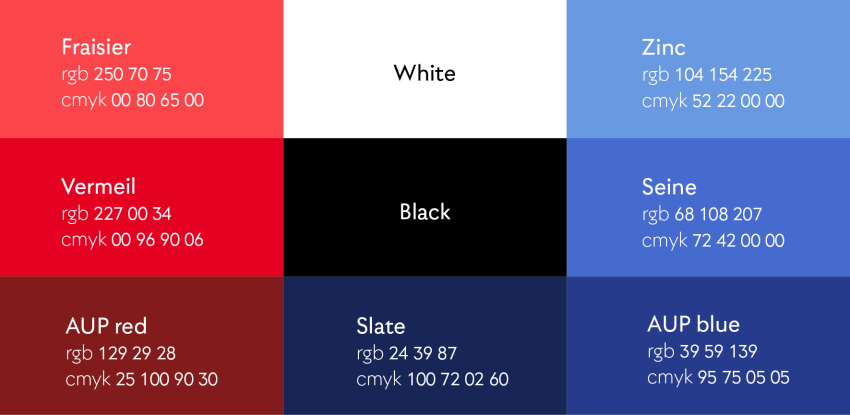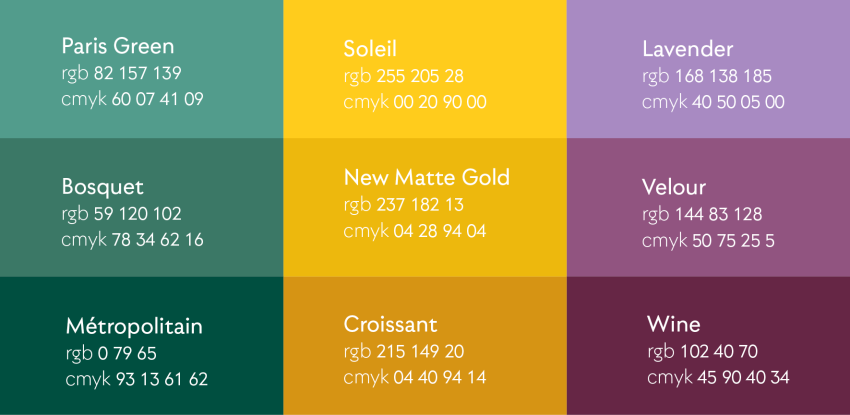
- About AUP
- History of AUP
- Mission & Core Values
- Vision and Leadership
- AUP Recognition
- Alumni Success
- Campus Development
- Arts at AUP
- Policies & Guidelines
- Academics
- Undergraduate
- Graduate Programs
- MA in Diplomacy and International Law
- MA in Global Communications
- MSc in Human Rights and Data Science
- MA in International Affairs
- MA in International Affairs, Conflict Resolution, and Civil Society Development
- MSc in International Management
- MSc in Strategic Brand Management
- Find Your Thesis Advisor
- Previous Programs
- Cultural Program
- Faculty
- Summer School
- Research Centers
- The Center for Critical Democracy Studies
- Upcoming Events
- Research Projects
- Fellows’ Publications
- Publishing
- Curriculum
- Community
- Visiting Scholars
- CCDS Highlights
- Atelier de Théorie Politique – Paris
- Critical Theory 101: Future Directions and New Challenges
- Martti Koskenniemi on “The Law of International Society: A Road not Taken”
- Academic Freedom Symposium
- Tocqueville Colloque 2023
- Violent Turns Conference
- Degenerations of Democracy
- DEMOS21 Inaugural Event
- What Demos for the 21st Century?
- The Paris Centennial Conference
- Justice Stephen Breyer
- Civic Jazz - The Launch of the Center
- Past Events
- FR
- The Center for Writers and Translators
- The George and Irina Schaeffer Center for the Study of Genocide, Human Rights and Conflict Prevention
- The Joy and Edward Frieman Environmental Science Center
- The Center for Media, Communication & Global Change
- The Center for Critical Democracy Studies
- Departments
- Academic Resources
- Academic Affairs
- Academic Calendar
- Academic Resource Center
- Library
- Registrar's Office
- Teaching and Learning Center
- Employer Network
- Accessibility & Accommodation Services
- AI@AUP: A Campus-Level Initiative
- Quai D'Orsay Learning Commons
- Paris as Classroom
- ACE Center
- Admissions
- Student Life
- Campus
- Student Leadership & Involvement
- Paris
- Support Services
- Student Development Help Desk
- Student Accounting Services
- Student Immigration Services
- Student Grievance Procedure
- Diversity and Inclusion
- Health & Well-being
- Digital Student Handbook
- News
- Events
- AUP Giving
- Housing Offer for 2025-2026
- IT Services
- Alumni
- About AUP
- History of AUP
- Mission & Core Values
- Vision and Leadership
- AUP Recognition
- Alumni Success
- Campus Development
- Arts at AUP
- Policies & Guidelines
- Academics
- Undergraduate
- Graduate Programs
- MA in Diplomacy and International Law
- MA in Global Communications
- MSc in Human Rights and Data Science
- MA in International Affairs
- MA in International Affairs, Conflict Resolution, and Civil Society Development
- MSc in International Management
- MSc in Strategic Brand Management
- Find Your Thesis Advisor
- Previous Programs
- Cultural Program
- Faculty
- Summer School
- Research Centers
- The Center for Critical Democracy Studies
- Upcoming Events
- Research Projects
- Fellows’ Publications
- Publishing
- Curriculum
- Community
- Visiting Scholars
- CCDS Highlights
- Atelier de Théorie Politique – Paris
- Critical Theory 101: Future Directions and New Challenges
- Martti Koskenniemi on “The Law of International Society: A Road not Taken”
- Academic Freedom Symposium
- Tocqueville Colloque 2023
- Violent Turns Conference
- Degenerations of Democracy
- DEMOS21 Inaugural Event
- What Demos for the 21st Century?
- The Paris Centennial Conference
- Justice Stephen Breyer
- Civic Jazz - The Launch of the Center
- Past Events
- FR
- The Center for Writers and Translators
- The George and Irina Schaeffer Center for the Study of Genocide, Human Rights and Conflict Prevention
- The Joy and Edward Frieman Environmental Science Center
- The Center for Media, Communication & Global Change
- The Center for Critical Democracy Studies
- Departments
- Academic Resources
- Academic Affairs
- Academic Calendar
- Academic Resource Center
- Library
- Registrar's Office
- Teaching and Learning Center
- Employer Network
- Accessibility & Accommodation Services
- AI@AUP: A Campus-Level Initiative
- Quai D'Orsay Learning Commons
- Paris as Classroom
- ACE Center
- Admissions
- Student Life
- Campus
- Student Leadership & Involvement
- Paris
- Support Services
- Student Development Help Desk
- Student Accounting Services
- Student Immigration Services
- Student Grievance Procedure
- Diversity and Inclusion
- Health & Well-being
- Digital Student Handbook
- News
- Events
- AUP Giving
- Housing Offer for 2025-2026
- IT Services
- Alumni
University Communications
Whether you're a faculty member, student, staff, or part of our broader AUP community, the Office of Communications is here to support you. You have a unique story to share, and we can assist you with the strategies and creativity to elevate that story across various communication platforms. Our new intranet will be launching soon, but in the meantime please explore some resources below and email us with any questions or for support at communications![]() aup.edu.
aup.edu.
Useful Documents and Files
To download the AUP logo, University letterhead or AUP PowerPoint template, please click here.
Press Contacts
press![]() aup.edu
aup.edu
+33 (0)6 63 53 95 30
Brand Colors

The full-color version of our logo makes use of Black, Seine blue and Vermeil red. Based on these primary colors, an extended color palette was created to enrich and diversify our communications. A simple rule of thumb to follow in using AUP’s colors is that they work best tonally, for example Zinc blue with AUP blue, or Seine blue with Slate blue.
Secondary Color Palette
The following colors are considered secondary colors because their use won't contribute to brand recognition as effectively as our palette of reds and blues. They are primarily designed for editorial applications, particularly those with high page counts, where additional colors are needed in order to differentiate one section from another. They can also be used in information graphics and data visualization. They are also best used in tonal pairs, as shown below.

Writing Tips
On paper, it’s a simple mission: write about AUP in a way that keeps people reading and holds their attention. To do that, you need to communicate the University’s mission with maximum impact and efficiency. In practice, that can be harder than it first seems. So, where do you begin?
By using our distinctive voice and tone, we can quietly but powerfully deliver our point of view. Careful and consistent use of voice and tone is an essential part of achieving brand coherence
Here are five essential characteristics to apply to your communication on behalf of AUP:
-
We are Bright
We speak to exploration, transformation, and growth, rather than performance or perfection. -
We are Precise
We do not waffle, beat around the bush, or ramble. We are targeted and accurate in what we say, & how we say it. -
We are Simple
We state things in an easy-to-understand tone and phrase. Our focus is clarity to help people to engage and feel included. -
We are Optimistic
We take the positive view and deliver it with passion and conviction, fundamentally believing that tomorrow will be better than today. -
We are Ambitious
We invite the reader to go beyond the expected and create their own point of view. Discussion and debate are an essential part of our voice.
- Write concisely; avoid unnecessary words
- Qualifiers such as “really,” “very,” “rather,” and “quite” can usually be cut, as can words like “actually,” “just,” “in fact,” and “indeed.”
- Write actively; avoid the passive voice
- Use “the professor taught the class” over “the class was taught by the professor.”
- Write intelligibly; don’t overuse long words
- If using an unfamiliar academic term, don’t assume everyone knows what it means – explain it.
- Avoid too much repetition of specific words or phrases
- Repetition should be deliberate and should increase the impact of the text.
- Show readers how great the University is, without telling them how great it is
- Don’t overdo positive adjectives (“the renowned professor,” “the fascinating conference,” “the well-attended event”). The achievements of students, staff and faculty speak for themselves without needing the extra help.
- Keep an eye on sentence length
- Figure out what you want to say and why and then do so simply. Try to avoid saying the same thing multiple times in different ways. Don’t pile up qualifiers or include too many “lists of three.”
- Avoid cliché
- When reviewing your work, ask yourself:
- Does this phrase sound familiar?
- Is this word pairing overused in writing? (Blind ambition, crystal clear, etc.)
- Did I use this sentence in something I recently wrote for AUP?
- Did I already use this sentence in the document I’m currently working on?
- Do I use this kind of language when I’m feeling uninspired?
- When reviewing your work, ask yourself:
- Do not use double spaces after periods – single spaces only.
- Avoid using subscript or superscript as it can lead to both online and print formatting issues.
- 21st-century literature; the 8th floor of the Quai; 10m2; CO2.
- When it comes to title capitalization, use MLA Style.
- Capitalize the first and last words of a title, as well as all nouns, verbs, adjectives, adverbs, pronouns and subordinating conjunctions. Prepositions are capitalized if they are longer than four letters or if they are part of a verb (Sign Up to Our New Book Club).
- Alternatively, you can use this tool and select “MLA Style.”
Photography
Photography plays a powerful role, not only in storytelling, but how we build the brand. When it comes to photography, there are three main imperatives that should inform the photos you take or select for your work:
- Authentically Occupied Space | Show real images that don't use people as props and that don't offer the perfect clean look. We're no airbrushing out the messiness of real life.
- Passion Portraits | Whenver possible, we want to show people interacting with the things that drive them—real people with real passions.
- It's in the Details | AUP is defined by our people and elements of the individual personalities in our community are what make AUP unique. We try to bring this across in all our storytelling, including photography.
Canva for Campus
We are excited to announce the phased introduction of "Canva for Campus" over the course of this academic year. We are partnering with IT Services and the Teaching and Learning Center on the implementation of this innovative platform, which is intended to empower our entire community to communicate more effectively. This implementation is part of a larger effort to improve internal communications at AUP, so expect to hear more from us regarding other initiatives in the coming months.
However, it's important to note that we have limited licenses available. In the coming months, we will provide more detailed information on how you can access "Canva for Campus," along with training resources to help you make the most of this platform. If you have any questions, please contact communications![]() aup.edu.
aup.edu.